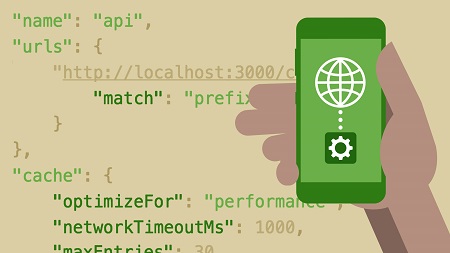English | MP4 | AVC 1280×720 | AAC 48KHz 2ch | 4h 40m | 725 MB
Developers are realizing that making responsive sites solves part of a user’s interaction needs, but more and more users are seeking app-like experiences regardless of what browser or device they use. Progressive Web Apps (PWAs) fit any form factor, are connectivity independent, and feel like an app because of how the app shell separates its treatment of functions and content. This course covers how to create PWAs using Angular.
Instructor Maximiliano Firtman takes you through the steps of upgrading an enterprise-style application to a PWA. First, he discusses the preparation steps involved. Then, he explains how to lay out and create the user interface. Next, he demonstrates how to get your application to connect to web services. Maximiliano also show how to make sure your PWA is installable, followed by how to leverage service workers for going offline.
Topics include:
- Progressive Web App architecture
- Creating business logic classes
- Geolocation and data services
- Adding routes to a project
- Creating a RESTful API
- Connecting Angular with HTTP module
- Connecting the form with the service
- The web app manifest
- Using service workers
- Pre-caching an app’s shell with ngsw
- Serving an app while offline
- Updating an interface on network status change
Table of Contents
1 Welcome
2 What you should know
3 Using the exercise files
4 What is a Progressive Web App
5 Progressive architecture
6 PWAs today
7 Android and iOS demo
8 Technology review
9 Setting up the basic project
10 Running the app
11 Creating the business logic classes
12 Creating services – Geolocation and maps
13 Creating services – Data
14 Using Angular Material
15 Creating the page components
16 Adding routes to the project
17 Creating components – List
18 Creating components – Coffee
19 Adding place location
20 Adding coffee ratings
21 Styling coffee component
22 Creating a RESTful API
23 Connecting Angular with HPPT module
24 Connecting the form with the service
25 Editing a coffee entry
26 Connecting mobile actions
27 The web app manifest
28 Defining icons and theme colors
29 Making an iOS home screen web app
30 Testing installation capabilities
31 Inviting the user to install the app
32 What is a service worker
33 Pre-caching app’s shell with ngsw
34 Serving the app while offline
35 Update UI on network status change
36 Dynamic ngsw-manifest cache
37 Supporting app updates
38 Adding web push notifications
39 Validating with Lighthouse and DevTools
40 Next steps
Resolve the captcha to access the links!
